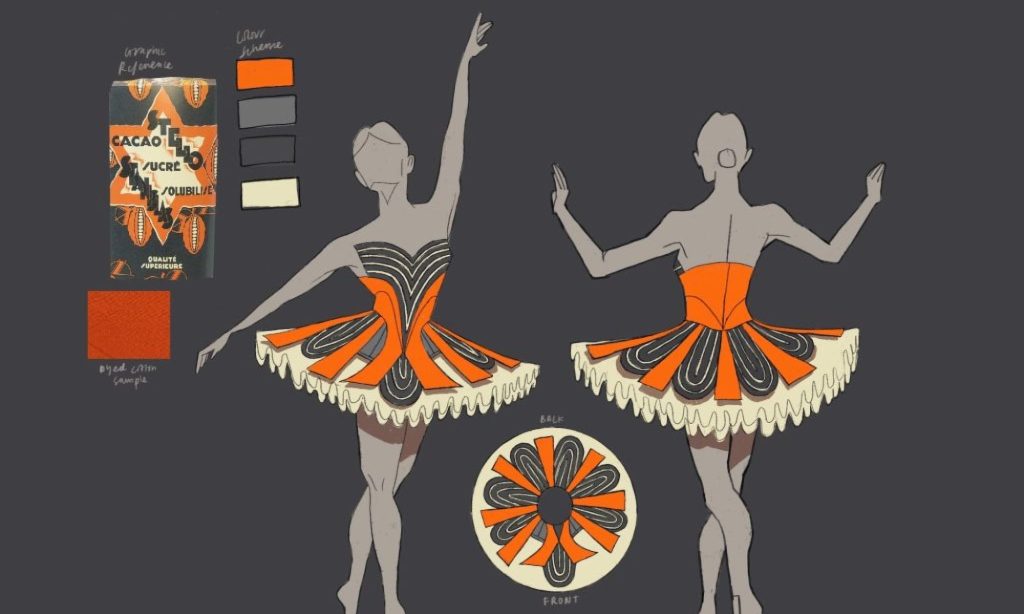The earliest tutu can be dated back to 1832 in the La Sylphide ballet in Paris. The ballet starred Marie Taglioni in a dress made of a white bodice and bell-shaped skirt that was cut just above the ankles. The costume quickly became the standard dress for ballerinas and sparked what is now known as the romantic era of ballet. The creation of the tutu was only made possible due to the advances of technology in the Industrial Revolution, cotton muslin and gauze (materials used to make tutus) were no longer only available in India and could be produced worldwide. Also, bobbinet (or tulle, as it is known today), a fabric previously made by hand could now be mass produced on weaving machines, this is notable because lots of tulle is needed to make the layers of the skirt, creating the illusion that the dancer is floating.
Towards the end of the 19th century, the style of dance used in ballet had developed and the style of the tutu had to evolve alongside it. Footwork and elegant leg movements had now become a big part of ballet and the low-cut dresses in the early part of the century would have been too restrictive, so the tutu was cut shorter to above the knee, allowing the legs to be seen and freeing the feet of any obstructions. This style of tutu also featured an elaborately decorated bodice and became known as the classical era of ballet as it is the silhouette most people imagine when they think of a ballerina.
Regardless of the role they played, the tutu had become the uniform of all ballerinas by the 20th century. The Ballets Russes however, a company founded by Sergei Diaghilev, was created to challenge and rebel against these ideas of how a ballerina should look. Instead of a single uniform, the Ballets Russes featured costumes that were designed specifically to the theme of each ballet.
Around the mid-20th century, we see tutus emerging that are more similar to the modern, “pancake”, tutu of today. To achieve this pancake style of silhouette, metal hoops came into use to help provide some structure to the skirt.
The tutu changed shape again in the late 1940s when Georgian-American choreographer
George Balanchine imagined a tutu that would allow audiences to see the dancer’s
movements without the inhibitions of a large skirt. Balanchine enlisted the help of costume
maker Barbara Karinska to bring his vision to life, creating the “powder puff” tutu that only
used 6-7 layers of tulle instead of the usual 10-12 layers, resulting in a smaller, shorter, and
lighter tutu. This wasn’t Karinska’s first innovation with the tutu though, some decade prior
she introduced the practice of cutting the side panels of the bodice on the bias. This allowed the bodice to sit tighter than it had before whilst also increasing the movement that the performers could have.
Sources:

